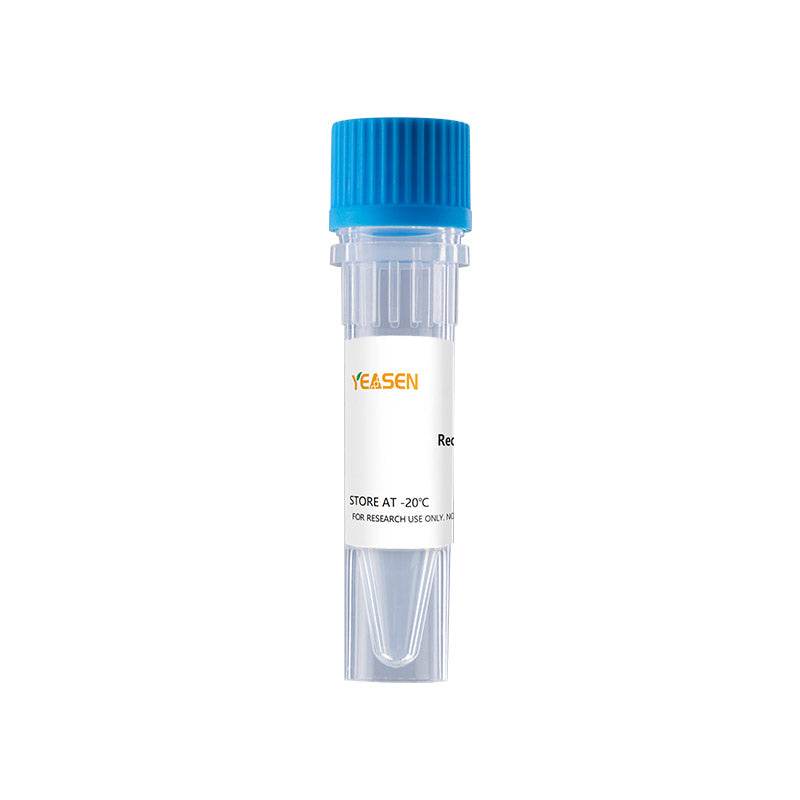Description
Murine aFGF, encoded by the FGF1 gene, is a member of the fibroblast growth factor (FGF) family. Fibroblast growth factor was found in pituitary extracts in 1973 and then tested in a bioassay that caused fibroblasts to proliferate. After further fractionating the extract using acidic and basic pH, two different forms have isolated that named "acidic fibroblast growth factor" (FGF-1) and "basic fibroblast growth factor" (FGF-2). Murine aFGF shares 52 % amino acid sequence identity with bFGF. Murine aFGF shares 96 % amino acid sequence identity with human aFGF, so it exhibits considerable species crossreactivity between murine and human aFGF. In mammalian FGF receptor family has 4 members, FGFR1, FGFR2, FGFR3, and FGFR4, and 1, 2, 3 have 2 sub-types “b”, “c”. aFGF can bind and activate all 7 different FGFRs. Affinity between aFGF and its receptors can be increased by heparin or heparan sulfate proteoglycan. aFGF plays an important role in the regulation of cell survival, cell division, angiogenesis, cell differentiation and cell migration.
Product Properties
|
Synonyms |
Fibroblast growth factor 1;FGF-1;Acidic fibroblast growth factor;HBGF-1 |
|
Accession |
|
|
GeneID |
|
|
Source |
E.coli-derived mouse Acidic Fibroblast Growth Factor protein, Phe16-Asp155 |
|
Molecular Weight |
Approximately 15.8 kDa. |
|
AA Sequence |
FNLPLGNYKK PKLLYCSNGG HFLRILPDGT VDGTRDRSDQ HIQLQLSAES AGEVYIKGTE TGQYLAMDTE GLLYGSQTPN EECLFLERLE ENHYNTYTSK KHAEKNWFVG LKKNGSCKRG PRTHYGQKAI LFLPLPVSSD |
|
Tag |
None |
|
Physical Appearance |
Sterile Filtered White lyophilized (freeze-dried) powder. |
|
Purity |
> 96 % by SDS-PAGE and HPLC analyses. |
|
Biological Activity |
Fully biologically active when compared to standard. The ED50 as determined by a cell proliferation assay using murine balb/c 3T3 cells is less than 0.2 ng/ml, corresponding to a specific activity of > 5.0 × 106 IU/mg in the presence of 10 μg/ml of heparin. |
|
Endotoxin |
< 1.0 EU per 1μg of the protein by the LAL method. |
|
Formulation |
Lyophilized from a 0.2 µm filtered concentrated solution in PBS, pH 7.4. |
|
Reconstitution |
We recommend that this vial be briefly centrifuged prior to opening to bring the contents to the bottom. Reconstitute in sterile distilled water or aqueous buffer containing 0.1 % BSA to a concentration of 0.1-1.0 mg/mL. Stock solutions should be apportioned into working aliquots and stored at ≤ -20 °C. Further dilutions should be made in appropriate buffered solutions. |
Shipping and Storage
The products are shipped with ice pack and can be stored at -20℃ to -80℃ for 1 year.
Recommend to aliquot the protein into smaller quantities when first used and avoid repeated freeze-thaw cycles.
Cautions
1. Avoid repeated freeze-thaw cycles.
2. For your safety and health, please wear lab coats and disposable gloves for operation.
3. For research use only!
Payment & Security
Your payment information is processed securely. We do not store credit card details nor have access to your credit card information.
Inquiry
You may also like
FAQ
The product is for research purposes only and is not intended for therapeutic or diagnostic use in humans or animals. Products and content are protected by patents, trademarks, and copyrights owned by Yeasen Biotechnology. Trademark symbols indicate the country of origin, not necessarily registration in all regions.
Certain applications may require additional third-party intellectual property rights.
Yeasen is dedicated to ethical science, believing our research should address critical questions while ensuring safety and ethical standards.

